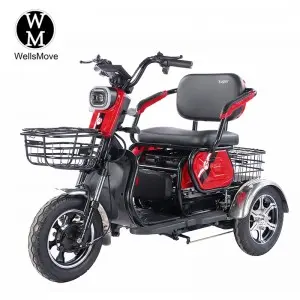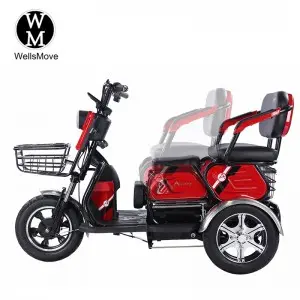Electric tricycles have become increasingly popular in recent years, providing a convenient and environmentally friendly mode of transportation for people of all ages. A common question that potential buyers often have is the load capacity of these vehicles. In this blog post, we will discuss how much weight an electric tricycle can hold and what factors you need to consider when buying one.
First, it’s important to note that the weight capacity of an electric tricycle can vary greatly depending on the model and manufacturer. Generally speaking, most electric tricycles have a weight capacity of about 350 to 450 pounds. However, there are some heavy-duty models that can support 600 pounds or more. It is important to check the specifications provided by the manufacturer to ensure that the trike can safely accommodate the intended user and any additional cargo.
When determining the weight capacity of an electric tricycle, consider not only the weight of the rider, but also any additional cargo or accessories you may be carrying. For example, if the rider plans to transport groceries, pets, or other items, the total weight must be taken into consideration. It is always safer to choose a tricycle with a higher weight capacity than necessary to provide a cushion for unexpected situations.
Another important factor to consider is the weight distribution on the trike. While most electric trikes are designed to evenly distribute the weight of the rider and cargo, it is recommended to avoid placing too much weight on the front or rear of the vehicle as this can affect its stability and handling. Additionally, riders should be aware of their position on the trike to maintain proper balance and minimize the risk of tipping over.
In addition to the weight capacity of the trike itself, it’s critical to ensure that the frame, wheels, and other components are durable enough to support the expected weight load. Investing in a high-quality electric trike from a reputable manufacturer can give you peace of mind and minimize the risk of structural issues related to heavy loads.
Additionally, understanding the terrain and the intended use of the e-trike is crucial when evaluating the weight-bearing capacity of an e-trike. If your trike is used primarily on flat, smooth surfaces, it may be able to handle more weight than if it is used frequently on hilly or uneven terrain. Factors such as motor power, battery capacity, and the overall construction of the trike can also affect its ability to carry heavier loads in different conditions.
When considering the weight capacity of an electric tricycle, it’s important to put safety first. Exceeding the recommended weight limit may affect the stability, maneuverability and overall performance of your trike, increasing the risk of accidents and mechanical problems. By adhering to the stated weight capacity and following proper usage guidelines, riders can maximize the life and reliability of their electric trike.
All in all, the weight capacity of an electric three-wheeler is a key consideration for potential buyers. By considering weight limits, weight distribution, component quality, intended use, and safety implications, individuals can make an informed decision when selecting an electric trike that meets their specific needs and requirements. Be sure to refer to the manufacturer’s guidelines and consult with a knowledgeable professional to ensure the trike you choose can safely accommodate the expected load. As long as they are properly maintained, electric tricycles can provide convenient and enjoyable transportation for riders of all sizes.
Post time: Feb-26-2024




